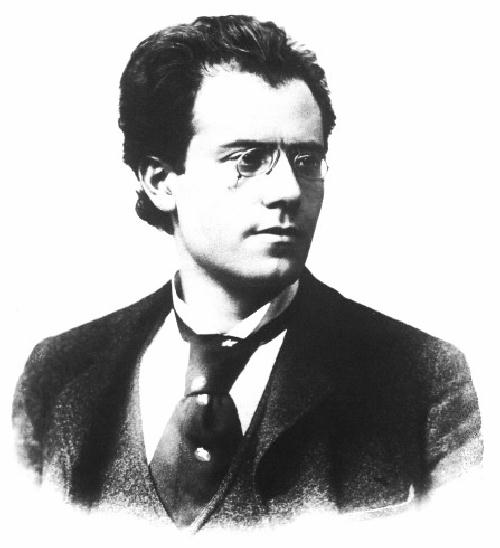|
||||||||||
|
Gustav Mahler was born in Kalište, in the Austro-Hungarian Empire, the second of twelve children. In 1875 he was admitted to the Vienna Conservatoire where he studied piano under Julius Epstein, harmony with Robert Fuchs, and composition with Franz Krenn. He later attended Vienna University at which time he worked as a music teacher and wrote his first surviving compositions including the cantata Das Klagende Lied. In 1880, Mahler began his career as a conductor with a job at a summer theatre at the Bad Hall (thermal baths) near Vienna. From this humble beginning his reputation grew and in the following years he enjoyed a series of increasingly prestigious appointments: Ljubljana (1881), Olomouc (1882), Vienna (1883), Kassel (1884), Prague (1885) Leipzig (1886) and Budapest (1888). His first long-term appointment was at the Hamburg Opera in 1891, where he stayed until 1897. It is believed that he began the composition of his first symphony in 1885, and that prior to that he had composed several symphonic works which he destroyed. The first symphony itself went through a significant metamorphosis before reaching its final form. On 20th November 1889, in Budapest, he conducted the première of a work he called "Symphonic poem in two parts". This was a five movement work, containing versions of the final four movements. However, it did not meet with great success. On October 27th 1893 Mahler conducted a substantially reworked version entitled "Titan, a tone poem in symphonic form". The name Titan refers to the novel by Jean Paul Richter (1763-1825), and was intended to convey the image of a passionate young man moving between extremes of hope and despair. The work was preformed unchanged in Weimar the following year. However, at the next performance in Berlin on 16th March 1896, Mahler revised it again, dropping the name Titan and removing the second movement, which now is sometimes played as a stand alone piece called Blumine. This was the version that was finally published as his first symphony in 1899. The symphony is strongly characteristic of Mahler's style, which can best be described as "outdoors". It is coloured by the sounds of the countryside, whether natural or man made. Throughout the mist that opens the first movement we hear, at a distance, the military band marching on the parade ground mixed with the calling of the birds as the dawn breaks. The opening of the second movement evokes the band at the village festival, and the final movement starts with a furious storm. Like most of Mahler's symphonies the melodic material is developed from his earlier songs. Mahler unusually provided some programmatic notes for the first version of the symphony. The first movement he describes as "nature's awakening from a long winter sleep". The second (originally third) movement he enigmatically tags with the phrase "the sails are fully set". It is a scherzo and trio made out of two dances: a landler and a gentle slow waltz. The third movement, the most famous of the symphony, he describes as a funeral march. "The animals in the forest escort the dead poet's coffin; hares carry the banner, in front there is a band of Bohemian musicians accompanied by cats making music, toads, crows etc. while stags, deer, foxes and other four-legged and feathered animals in funny positions accompany the funeral procession. The piece should be the expression of a cheerful and ironic but eerie and gloomy atmosphere." It is followed directly by "the sudden burst of desperation of a deeply wounded heart." Finally though the passion that begins the final movement gives way to triumph. The work owes much to the German symphonic tradition, especially Beethoven and Brahms. Like the Eroica symphony it makes extensive use of motivic development of small and simple melodic fragments. In its overall architecture it adopts the falling thirds of Brahms. The first melodic idea we hear is made up of falling fourths which step downwards from A to F to D. The falling fourth seems to act as a seed from which other melodic ideas grow, whereas the downward movement in thirds (A to F to D) is the harmonic foundation on which the work stands. The first movement, opens with the single note A, then moves through a troubled development climaxing in a mood of uncertainty on the note F before the movement finally falls to D for its exuberant conclusion. From a more distant perspective the same pattern characterises the whole symphony. The note A which opens the first movement becomes the key of the second movement. After the doubt and uncertainty of the funeral march the symphony explodes passionately in the key of F minor before finally finding certainty and triumph the home key of D. To end the symphony the mysterious falling fourths of the opening return in a blaze of glory from the huge orchestra. Mahler's first symphony was performed by the Portobello orchestra on the 7th July 2012, conducted by Anthony Weeden. back |

